Related Research Articles
Communications in the United States include extensive industries and distribution networks in print and telecommunication. The primary telecom regulator of communications in the United States is the Federal Communications Commission.

Skywarn is a program of the National Weather Service (NWS). Its mission is to collect reports of localized severe weather in the United States. These reports are used to aid forecasters in issuing and verifying severe weather watches and warnings and to improve the forecasting and warning processes and the tools used to collect meteorological data. Reports are also used by local emergency managers and public safety organizations.

An emergency telephone number is a number that allows a caller to contact local emergency services for assistance. The emergency number differs from country to country; it is typically a three-digit number so that it can be easily remembered and dialed quickly. Some countries have a different emergency number for each of the different emergency services; these often differ only by the last digit.
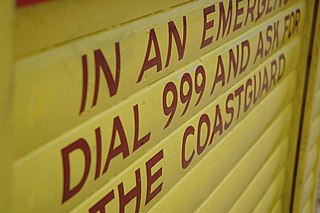
999 is an official emergency telephone number in a number of countries which allows the caller to contact emergency services for emergency assistance. Countries and territories using the number include Bahrain, Bangladesh, Botswana, Eswatini, Ghana, Guernsey, Hong Kong, the Republic of Ireland, the Isle of Man, Jersey, Kenya, Macau, Malaysia, Mauritius, Poland, Qatar, Sudan, Saudi Arabia, Singapore, Trinidad and Tobago, Seychelles, Uganda, the United Arab Emirates, the United Kingdom, and Zimbabwe.

A call box or callbox is a box containing a special-purpose direct line telephone or other telecommunications device which has been used by various industries and institutions as a way for employees or clients at a remote location to contact a central dispatch office.
111 is the emergency telephone number in New Zealand. It was first implemented in Masterton and Carterton on 29 September 1958, and was progressively rolled out nationwide with the last exchanges converting in 1988.
The Government Radio Network (GRN) is a network of various systems in place across Australia that enable statewide trunked radio communication. The network operates through inter-linked sites for government and public services such as police, ambulance, fire, or roads authorities which require such a system to function properly. The main aim of the GRN is to consolidate all resources into one network, ensuring greater coverage and reliability than if each department had its own independent communication system. The existence of the GRN also reduces the amount of government money and resources needed to maintain communication between units of emergency and public service branches. Last, it allows effective intercommunication among these services in times of national or state emergency for coordination of wide-scale actions.
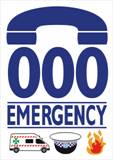
000 Emergency, also known as Triple Zero or Triple 0, and sometimes stylised Triple Zero (000), is the primary national emergency telephone number in Australia and Australian External Territories. The Emergency Call Service is operated by Telstra, and overseen by the Australian Communications and Media Authority (ACMA), and is intended only for use in life-threatening or time-critical emergencies.
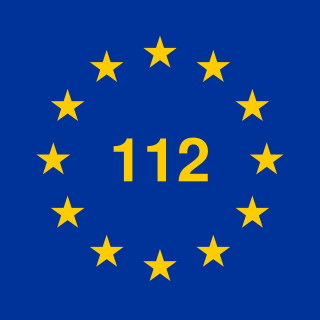
112 is a common emergency telephone number that can be dialed free of charge from most mobile telephones and, in some countries, fixed telephones in order to reach emergency services.
119 (one-one-nine) is an emergency telephone number in parts of Asia and in Jamaica. From May 2020, 119 was introduced in the United Kingdom as the single non-emergency number for the COVID-19 testing helpline in England, Wales, and Northern Ireland. From January 2022, 119 was introduced in Romania as the single non-emergency number for reporting cases of abuse, neglect, exploitation and any other form of violence against the child.
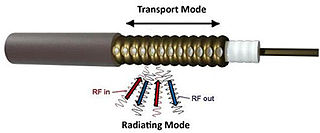
A leaky feeder is a communications system used in underground mining and other tunnel environments. Manufacturers and cabling professionals use the term "radiating cable" as this implies that the cable is designed to radiate: something that coaxial cable is not generally supposed to do.

In times of crisis and natural disasters, amateur radio is often used as a means of emergency communication when wireline, cell phones and other conventional means of communications fail.
Airwave Solutions Ltd. is a British mobile communication company that operates the Airwave network, a mobile communications network used by Great Britain's emergency services. The Airwave network is based on the specialist Terrestrial Trunked Radio (TETRA) specification. Airwave was acquired by Motorola Solutions in February 2016 and now operates as a wholly owned subsidiary.
Amalgamated Telecom Holdings Kiribati Limited (abbreviated ATHKL) is the sole communications provider to the Republic of Kiribati. Before a change of ownership, the company was known as Telecom Services Kiribati Limited or short TSKL. In addition to traditional telecommunication, ATHKL offers such services as telegram and facsimile services. Until 2007 the company maintained the country's ccTLD, .ki, which is now under the control of a separate agency, Telecommunications Authority of Kiribati.

The Ministry of Home Security was a British government department established in 1939 to direct national civil defence, primarily tasked with organising air raid precautions, during the Second World War. The Ministry for Home Security was headed by Sir John Anderson, the Home Secretary and Minister of Home Security. The Ministry's responsibilities covered all central and regional civil defence organisations, such as air raid wardens, rescue squads, fire services, and the Women’s Voluntary Service. It was also responsible for giving approval to local ARP schemes and providing public shelters.
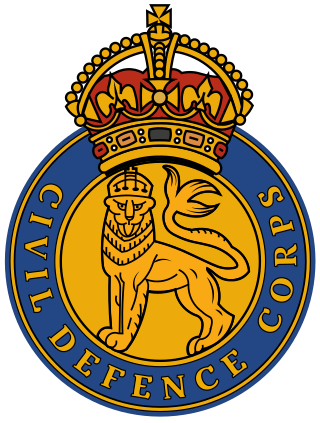
The Civil Defence Corps (CDC) was a civilian volunteer organisation established in Great Britain in 1949 to mobilise and take local control of the affected area in the aftermath of a major national emergency, principally envisaged as being a Cold War nuclear attack. By March 1956, the Civil Defence Corps had 330,000 personnel. It was stood down in Great Britain in 1968, although two Civil Defence Corps still operate within the British Isles, namely the Isle of Man Civil Defence Corps and the unrelated Civil Defence Ireland in the Republic of Ireland. Many other countries maintain a national Civil Defence Corps, usually having a wide brief for assisting in large scale civil emergencies such as flood, earthquake, invasion, or civil disorder.
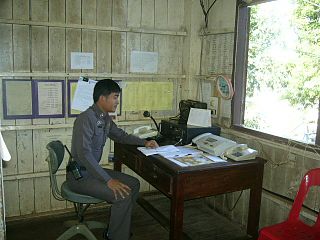
Police radio is a radio system used by police and other law enforcement agencies to communicate with one another. Police radio systems almost always use two-way radio systems to allow for communications between police officers and dispatchers.
MTPAS is a procedure in the UK for prioritising access to the mobile telephone networks for privileged persons. It replaced ACCOLC in 2009.
The Norwegian Public Safety Network is a public safety network system based on Terrestrial Trunked Radio (TETRA). Nødnett is implemented by the Directorate for Emergency Communication. The network is primarily used for internal and interdisciplinary communication by the police, fire departments and health services. Nødnett is also used by several organisations participating in rescue and emergency work. Planning of the network started in 1995 and in 2006 the contract to build it was awarded to Nokia Siemens Networks. As Nokia Siemens Networks was unable to complete the contract, it was passed on to Motorola Solutions in 2012. The critical infrastructure of Nødnett was finished and was operational in all districts of mainland Norway by December 1, 2015.
The Wireless Institute Civil Emergency Network (WICEN) is a group of Australian emergency amateur radio organisations. WICEN groups provide communications during emergencies or disasters when normal communications stop working. WICEN groups have assisted during bushfires, floods and cyclones. WICEN groups also provide communications at events such as the Great Victorian Bike Ride, Red Cross Hawkesbury River Canoe Marathon and National Capital Rally. WICEN groups meet regularly to train and conduct exercises with other agencies.
References
- ↑ "Home". dtels.org.
- 1 2 "Emergency Manual Switching System". ringbell.co.uk.
- ↑ "DTELS - Field Organisation (Page 1 of 2)".
- ↑ "Last Ditch Network". ringbell.co.uk.
- ↑ "pnc codes.jpg". Archived from the original on March 17, 2012.
- ↑ "Telephone Preference System". ringbell.co.uk.
- ↑ "Airwave Solutions: Home".